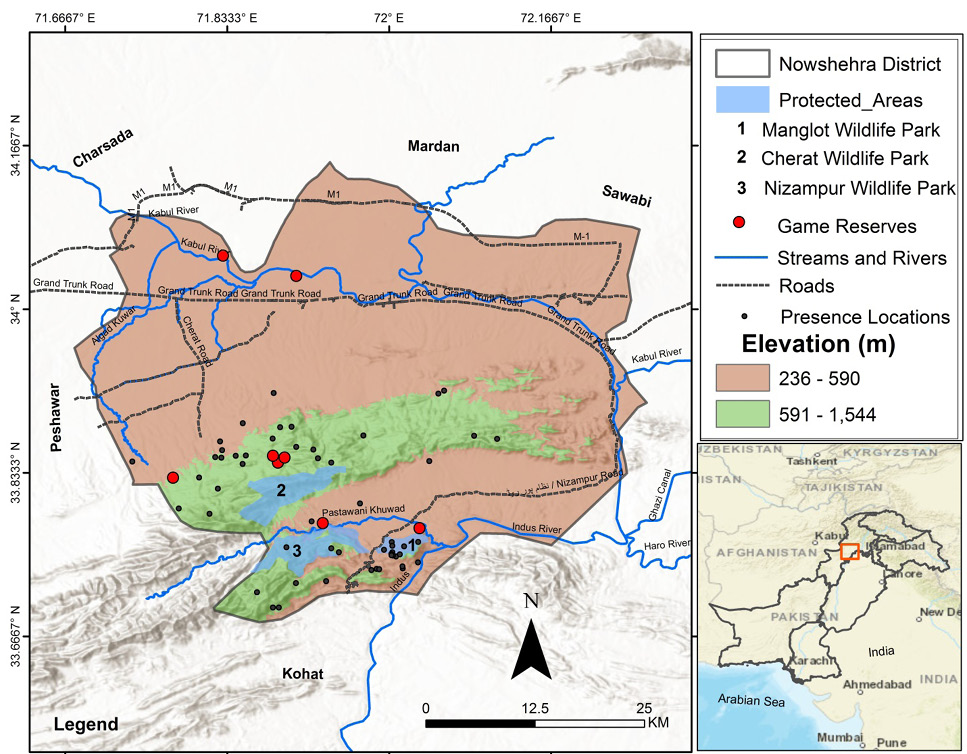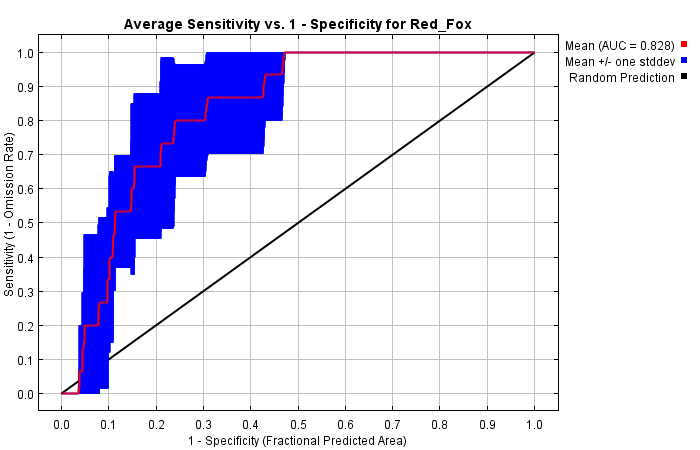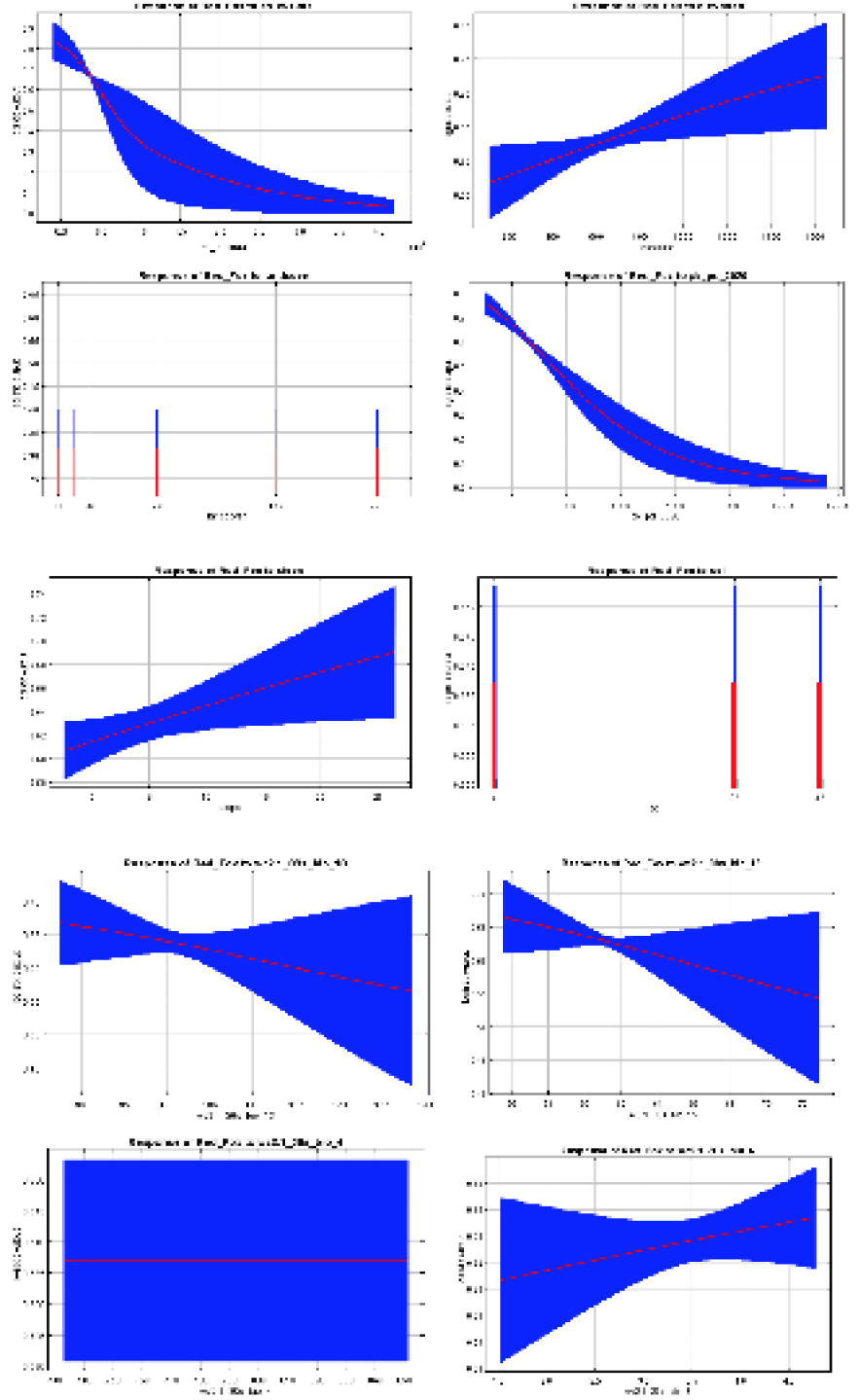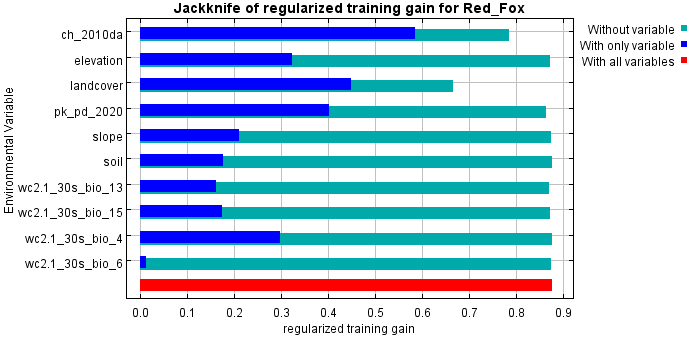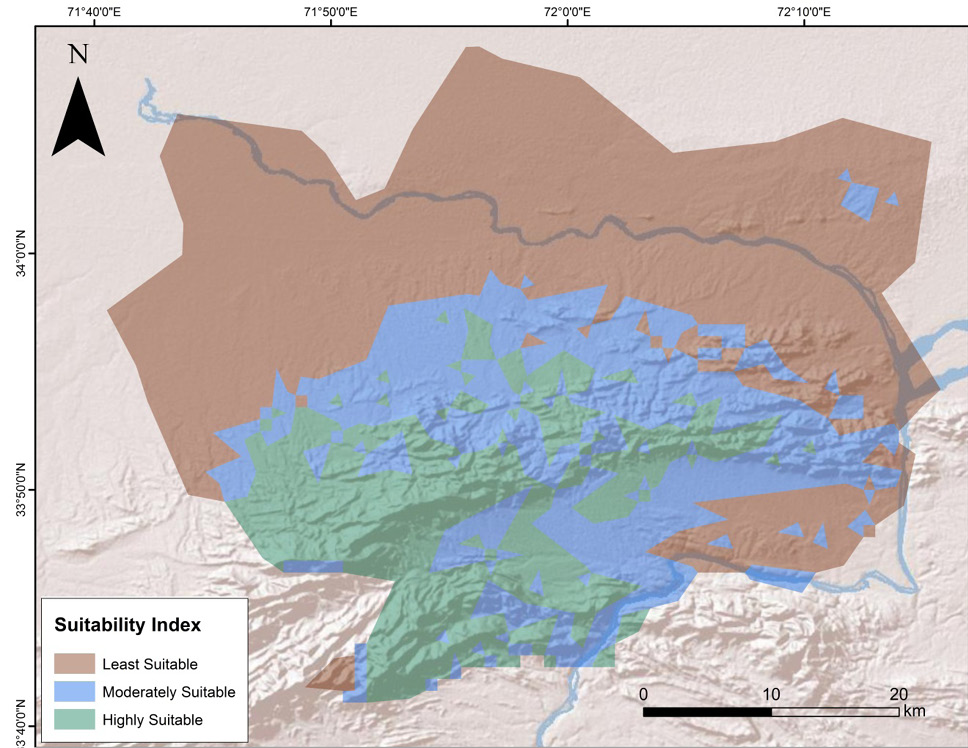A Step Towards Conserving Biodiversity in Human-Dominated Landscapes: Habitat Evaluation for Red Fox (Vulpes vulpes) in North-Western Pakistan
A Step Towards Conserving Biodiversity in Human-Dominated Landscapes: Habitat Evaluation for Red Fox (Vulpes vulpes) in North-Western Pakistan
Romaan Hayat Khattak1, Shakeel Ahmed2, Liwei Teng1,3* and Zhensheng Liu1,3*
Study area map, depicting recorded presence and protected areas in the study area.
(A) Red fox photographed in the study area (Photo credit: Abdul Hadi), (B) Red fox scat in the study area.
Response curves of predictors for red fox occurrence in the study area. The red curves show the mean response of the five replicate MaxEnt runs, while the mean +/− one standard deviation is indicated by blue (two shades for categorical variables). The predicted value of habitat suitability (logistic output) is shown on the Y-axis, while the range of the environmental predictors is shown on the X-axis.
Jackknife test of regularized training gain of variables tested in the red fox habitat suitability model.
Distribution of different types of habitats in the study area based on MaxEnt modeling using presence-only data.







